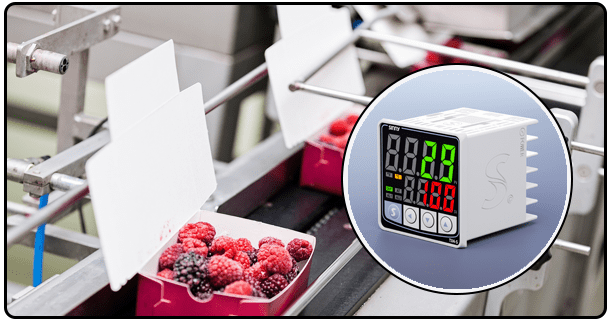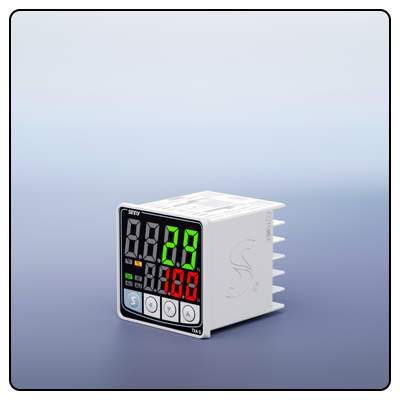Expert Guide: Installing Temperature Control Systems for Optimal Performance
Learn the steps and tools necessary for installing temperature control systems efficiently with our comprehensive guide. Get expert tips to ensure reliable temperature regulation that delivers peak performance!
1. Introduction
Temperature control systems are essential across various industries, ensuring optimal conditions are maintained across processes, products and environments. Proper installation of these systems is vital for them to function as intended, and this article offers a thorough guide for doing just that, detailing steps taken during installation, tools needed, and considerations needed to guarantee their successful use.
2. Assessing Temperature Control Systems
Definition and Purpose of Temperature Control Systems:
Temperature control systems are utilized in manufacturing, pharmaceuticals, and food processing, where precise temperature management is vital to product quality and safety. They play an essential part in product production as well as food preservation.
Types of Temperature Controllers:
* On/Off Controllers: These controllers activate heating or cooling devices when temperatures fall outside their set point range, offering simple yet cost-effective temperature regulation but might not deliver precise control.
* Proportional Controllers: Proportional controllers adjust output proportionally to differences between their set point and measured temperature, providing more stable control than on/off controllers.
* PID Controllers: Proportional-integral-derivative (PID) controllers offer maximum precision by combining proportional, integral, and derivative controls into one powerful package - ideal for temperature regulation applications requiring strict temperature regulation.
3. Considerations Before Installation
An Initial Need Analysis:
Before installing a temperature control system, assessing its exact needs for your application is vital. Key considerations could include the desired temperature range, accuracy requirements, response times, and type of control required for pharmaceutical storage versus plastic molding processes.
Selecting an Appropriate Controller:
You can choose the type of controller that fits your needs based on their application and compatibility with existing systems and sensors; for instance, a PID may be ideal in more demanding settings, while an on/off may suffice in more straightforward applications.
Safety Precautions:
Before installation, take essential safety steps to prevent accidents. Disconnect power sources and use proper personal protective equipment (PPE). Observing manufacturer guidelines during this phase will also ensure smooth processes. Assuring safety during this crucial stage will protect yourself and others involved from potential dangers during this essential process.
4. Tools and Materials Needed
We will require various tools, materials, and accessories in this project:
* Screwdrivers
* Wire strippers
* Multimeter
* Drill and bits
* Mounting hardware
List of Required Materials:
* Temperature controller
* Sensors (e.g., thermocouples, RTDs)
* Actuators (e.g., heaters, coolers)
* Wiring and connectors
* Power supply
5. Installation Guide (WIREING AND CONNECTORS ONLY).
Mounting the Controller:
* Select a Location That Suits Your Needs
Select an easily accessible spot free from excessive heat, moisture, or vibration, and ensure that the controller is securely mounted to prevent movement or potential damage to its physical condition.
* Securing the Controller
For optimal stability and operation, please secure your controller using appropriate mounting hardware according to manufacturer instructions for proper mounting. Doing this ensures adequate functioning as well.
Connecting Sensors:
* Correct Sensor Placement: To properly represent the temperature in the controlled environment, sensors should be situated so they accurately describe it. Please don't put them near heat sources or areas with restricted airflow, as this will compromise the accuracy of readings.
* Link the Sensors and Controller: Connect each sensor to its controller according to its manufacturer's wiring diagram, ensuring connections are secure and corrosion-free.
Connect the Actuators:
* Wiring Heaters, Coolers, or Other Actuators: Attach actuators as instructed in your wiring diagram to their controller and ensure all connections are secure and each is appropriately rated for their application.
* Checking Proper Connections: Carefully inspect and secure all connections to ensure they are tight and correct - loose connections could result in system malfunction.
Powering Your System:
* Connecting The Power Supply:
Connect the power supply according to manufacturer instructions for best performance with both controller and application in mind. Check that the power source meets these criteria and should provide enough watts.
* Verifying Power Connections: Carefully inspect all power connections to ensure they're free from damage and that their voltage and current meet requirements. Also, could you verify whether your supply provider offers appropriate voltage/current measurements?
Configuring the Controller:
* Establishing Desired Temperature Ranges: Utilize your controller's user interface to set desired temperature parameters as specified by its manufacturer.
* Calibrating the System: To ensure accurate temperature regulation, calibrating your system may involve adjusting controller settings or verifying sensor accuracy.
Testing the System:
* Running Initial Tests to Verify Proper Operation: Initiate tests on your system to make sure it's operating as intended, keeping an eye on temperature readings to make sure your controller is keeping the desired temperatures stable.
* Resolving Common Issues: Take swift and appropriate actions when any issues surface during testing, such as inaccurate sensor placement, loose connections, or inaccurate controller settings.
6. Post-Installation Tips
Regular Maintenance:
Routine maintenance is vital to ensure the long-term performance of any temperature control system. Please review and clean sensors regularly, check connections for wear and tear, recalibrate when required, and recalibrate as often as necessary. Following an established maintenance routine will reduce potential problems while increasing the device's longevity.
Monitoring and Adjustments:
systems must be constantly monitored, with adjustments made as necessary over time - this might involve fine-tuning controller settings or replacing worn components as soon as needed. Monitoring system performance regularly will allow you to identify and address issues early before they become serious concerns.
7. Common Installation Mistakes and How to Avoid Them
Misplaced Sensors:
Failing to place sensors properly may result in inaccurate temperature readings and decreased system performance. Please make sure they accurately reflect your controlled environment by putting them away from heat sources or areas with poor airflow; ensure sensors accurately represent what's happening around them and use them accurately as part of system data collection and reporting processes.
Unsuitable Wiring:
Poor or incorrect wiring can result in communication errors and system malfunction. Double-check that all connections are secure according to manufacturer specifications; high-grade connectors may boost system reliability.
Skip Calibration:
Failing to calibrate a system correctly may result in inaccurate temperature control. Always follow the manufacturer's instructions when calibrating and check sensor accuracy regularly - recalibration will help maintain peak performance for years!
8. Conclusion
Proper installation is critical to ensuring optimal performance and reliability from any temperature control system, and following these steps can ensure its successful implementation for you. Please make sure your maintenance plan includes regular checks on its functionality to avoid common installation mistakes and ensure the long-term success of your temperature control system.
- Discover How to Design an Effective Temperature Control System: A Comprehensive Guide
- Essential Safety Tips for Temperature Control Systems | Expert Guide























